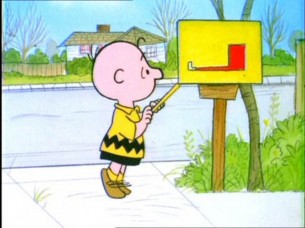Not too long ago I was packing up my life in Houston, Tx, shoving everything I owned into my car for a trip west. In between buying packing tape and paper cuts my mind was bombarded with ideas for improving newspaper video.
One of those ideas resonated enough with the judges of the Knight-Mozilla News Technology Partnership that last week they invited me and 59 others to expand on our proposals.
I’m humbled and excited and once again I’m lying awake at night thinking about newspaper video.
In thinking about video’s future, I’ve identified key areas to consider and brainstormed solutions. In the next couple of weeks I’ll be sharing some of my idea, but for now let’s define the hurdles.

Video is:
- visual/audio over time
- linear and non-liner narrative… is non-linear still news video?
Video can be:
- multimedia
- interactive
- social
- a conversation with people who want to talk back to news gathers
- incentivized with gaming and reward systems
- immersive and customized to control how the story is told to me
Video in practice:
- How is it consumed?
- How is it delivered?
- How is it presented?
Issues:
- video is not being seen
- video is not making money
- video has short shelf life b/c news orgs do bad job on long tail
- video is very one way in this 2way world
Today’s new video isn’t searchable, poorly archived, presented poorly, often not on the same page with the written story, has no page on news web sites to call home,
Virtually all of the issues with video online stem from a failure to think about how people interface with it. Video needs a approach with integration across the board, engagement beyond the initial posting, social sharing and commenting options.
News video also has issues with workflow, monetization, scaling to other formats like mobile and has been slow to tap into geo-location, gaming and any form of two way communication with viewers.
The world has changed and a new generation of readers have become accustomed to, need and demand customized content, context-aware content, engagement and participation.
The web is a dialogue and not a lecture and even if video online plays in a window that looks like the one way TV box, it also demands to be a conversation.
Perfect Storm
Inexpensive tools, broadband penetration, wireless everywhere, inexpensive powerful displays saturated in every converged device, the desire of consumers to become creators, smart phones slated to reach 50% of all cell phone users by years end… all the elements are in place for a renaissance in how video is created, consumed, shared and delivered and to ignore it is to let someone else take advantage.
News video can’t be one way any more and the signs are all around us.
CD sales falling, movie goers falling, TV viewership falling, magazines falling, newspapers falling … what’s rising?
The web is rising.
Facebook users rising, blogs rising, self promoted iTunes music rising, YouTube rising, Twitter rising (but Twitter is interesting b/c it’s a way for people to bookmark old media and organize it for their friends in a way they choose. For others it’s still a #WeBrookUpBecause, #BoyBeTrippin, “Going to bed” sound board, but I digress).
Duh right?
Well, as I see it, many newspapers still don’t see it that way and this attitude is reflected in the way that newspaper websites look: clumsy, ugly, unsearchable, not socially friendly, not comment friendly and not inviting for interaction or contribution.
They’re lumbering giants of inefficiently, and their owners don’t seem to get how the web works or the paradigm shift that’s already occurred (see 2002) in which we can’t be gatekeepers anymore. There is no gate. When Thad Allender was part of the team that redesigned the Lawrence World Journal, it was scene as a revolution. Mr. Allender knew what it was, it was a blog, so he moved on and got into blogs.
The new new skool
Media today has to enrich lives, be easy to use, almost passive like an app, flow both ways and provide a benefit for the person’s investment of time.
We’re social creatures, we want to be heard, we want to listen, we want to respond, we want to share and we want to know what others think. In sum: media becomes more relevant, useful and available… and fragmented and fighting for attention, so we must always innovate and take on a culture of experimentation.
Every major player in business (don’t be fooled, journalism is a business) has had an R&D department with the simple goal of innovation and ensuring the business survives the next 20 years.
That may seem like a disjointed analogy for newspapers, but just imagine what newspapers could have done with their own in house Google Labs. Could we have invented Yelp, Kickstarter, GroupOn or Facebook?
It’s not too late, we can still look to others and study them to improve our service.
In reagards to video, the popular video site Hulu.com can provide a roadmap for how viewers want to engage with video. Hulu is social video, it allows us to search, archive, tag, share, copy, paste and remix video, and we can learn to speak this language and take it further to become a news tool.
Flickr provides an example of a strong loyal community which creates value for users with their interestingness page. What if newspapers did that with user submitted video to grow our community?
You get the picture, there’s examples of tested models right under our nose waiting to be adapted and studied.
Re-Evolution
We’re in a time now that’s ready for innovation and the revolution, Gilbert Scott-Heron (RIP) was right, the revolution will not be televised, it’ll be in the streets, by the people, on a platform that allows them to talk back and engage deeper with folks like journalist.
Today demands a web that caters to users on a personal level. RSS feeds, personalized Google homepages, Twitter feeds, YouTube and that’s just the beginning. We’ve seen with cell phone the demise of wrist watches and compact cameras and in a very short time the pattern will repeat with video cameras as well. Everyone will have cameras with them at all times and we have to ask ourselves how to best make use of this 3D cloud of images and videos and information to mesh them together into a mosaic. The people are demanding we tear down the last wall between gatekeeper trained journalist and anyone with a motivation, passion and an opinion.
That shouldn’t happen.
Well, not 100%. Case in point, when the bin Laden news broke, most of us heard about it on social media first, but, we didn’t believe it until Obama confirmed it with trained trusted traditional media.
So in this new world, we still need journalist to be that trusted voice that gets us answers, but now the role will be very different. We don’t need journalist to waste their skills on page fillers like car crashes or high school sports. Any blogger with some official stats can do that on their own volition. Journalist need to focus on what we do well, be curious investigators who search for truth and report with integrity on the issues the public depends on us for.


